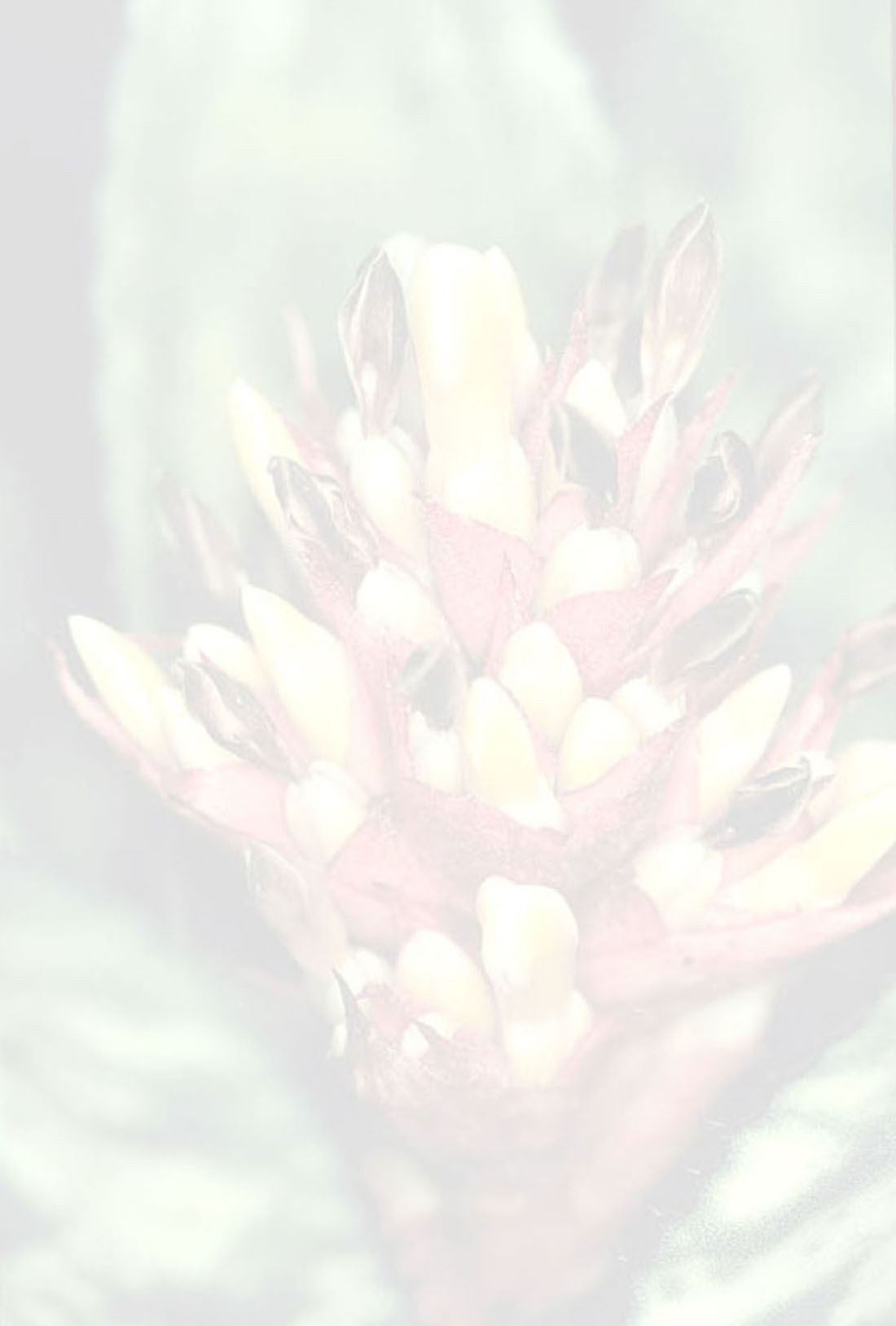

 Aechmea pendulispica Leme & L.Kollmann[as Aechmea pendulispica Leme & L.Kollmann]
Aechmea pendulispica Leme & L.Kollmann[as Aechmea pendulispica Leme & L.Kollmann]Diagnose: —This new species is characterized by the leaves comparatively thinner in texture, leaf blades with margins subentire or irregularly and inconspicuously spinulose at the apex, the outer ones bearing a narrow U-shaped protruded central channel near the base, by the pendulous inflorescence with a comparatively higher number of flowers, smaller flowers and subacute petals. All those characteristics distinguish it from Aechmea bicolor, the closest relative. Observations: —Observations: According to the key for identification of the small-sized species of simple inflorescence of the “Aechmea lingulata complex” provided by Leme & Siqueira-Filho (2006b), A. pendulispica is closely related to A. bicolor Smith (1955: 12). However, this new species differs by the leaves, that are comparatively thinner in texture (vs. coriaceous) which give it a more delicate general appearance, leaf blades with the margins subentire or irregularly and inconspicuously spinulose at the apex (vs. uniformely spinulose throughout), the outer blades bearing a narrow U-shaped protruded central channel near the base (vs. central channel absent), pendulous inflorescence (vs. erect) with a comparatively higher number of flowers (ca. 70 vs. 20–40), smaller flowers (14–15 mm vs. ca. 20 mm long) and subacute petals (vs. rounded and inconspicuously emarginate).
While A. pendulispica is known from coastal low-elevated slopes covered by hygrophilous Atlantic Forest of Bahia state, A. bicolor is a typical dweller of the countryside dryer areas of the Bahian counties of Ituaçu, Jequié, Santa Teresinha and Castro Alves, which explains its distinctly coriaceous and comparatively more robust general appearance. Aechmea bicolor grows at elevations above 500 m, distant 120 to 250 km from the coast.
It is worth to mention that in the protologue of A. bicolor (Smith 1955) the field information originally provided on the label of the type is reproduced, which informes that the specimen was collected in Bahia, Northeast Brazil, by M.B. Foster # 2450, in 18 October 1948, as an epiphyte, in dense forest, between Ituaçu (as “Iturassu”), ca. 250 km from the coast, and Jequié, ca. 120 km inland from the coast. However, Smith & Downs (1979) erroneously corrected the origin of the type on the basis of a letter of Foster from 7 August 1958, indicating that the type specimen of A. bicolor, now as “Foster # 2514”, came from the area of Blumenau to Itajaí, Santa Catarina state, southern Brazil. The recently collected specimens used for comparison in this study (Leme # 2790, # 4228) were found at the same geographical sector of Bahia State, in the counties of Castro Alves and Santa Teresinha, not far from Jequié, reinforcing the accuracy of the field data provided in the protologue of A. bicolor.Edited from (29-03-2017): Leme & Kollmann 2013. (protologue) Miscellaneous New species of Brazilian Bromeliaceae .